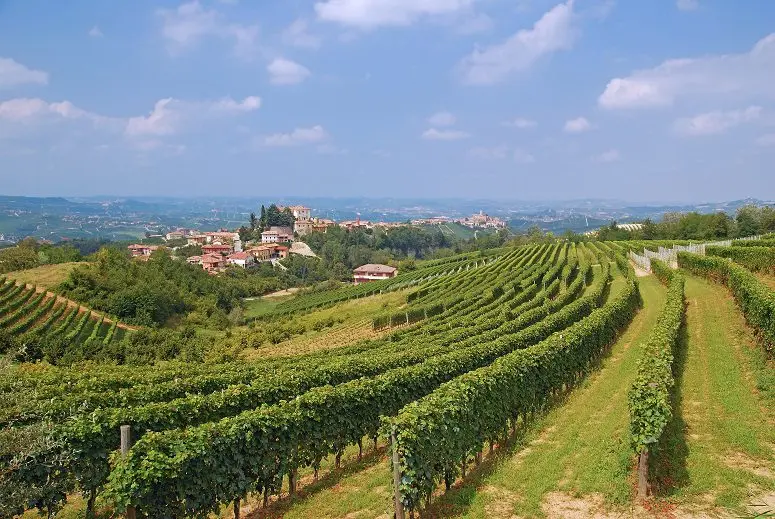The name “Asti” is used to refer to sparkling wines produced in the Italian region of Piedmont. Local masters were not afraid to challenge the most famous representative of this group – French champagne. Things didn’t go well at first, but when the Martini company took over production, things changed for the better. Asti wines differ from champagne not only in name, but in many ways they are different drinks.
Asti (Asti) – a type of Italian sparkling wine with a strength of about 7% produced using a special technology. Giovanni Battista Croce, a jeweler from Turin, is considered the founder of the trend. Having knowledge in the field of chemistry, at the beginning of the XNUMXth century he began to practice reduced fermentation. The essence of the method is that the wine must is not allowed to ferment until the sugar is completely lost. The result is a sweet sparkling wine that does not lose its natural aroma.
Over the next two centuries, Italian winemakers perfected the drink. In 1863, the first bottle of Asti martini appeared, and 15 years later, another legendary sparkling wine, Mondoro Asti. For the next 50 years, Asti’s wines (then called Moscato Champagne) could not get out of the shadow of their “big brother” – champagne. They were only sold in Italy and a few neighboring countries.

Recognition came when Asti was brought home by American soldiers who returned after World War II. At first, tasters were skeptical about the new drink. But over time, people’s love for Italian sparkling wines forced professionals to reconsider their opinion. In addition to Martini and Mondoro, Asti wines are produced by other well-known Italian brands, such as Cinzano, Gancia and Santero.
Differences between Asti wines and champagne
Many call Asti champagne, but this is fundamentally wrong. The point is not only in the legislative restriction, according to which only drinks produced in the French region of the same name are considered champagne, there are other differences.
1. Grape varieties. Real champagne is made from three varieties of white and red grapes grown in the Champagne region. These are Pinot Meunier, Pinot Noir and Chardonnay. For Asti wines, two types of white Muscat grapes from Piedmont are used – Moscato Bianco and Moscato di Canelli.
2. Production technology. Champagne is characterized by a full cycle of fermentation followed by the addition of sugar. Asti wines are made by the method of incomplete fermentation, after which natural glucose remains in the drink, so adding sugar is pointless.
3. Taste. Asti sparkling wines are not as strong and sweeter than most types of champagne. On the palate, notes of flowers, apples, honey and oranges stand out. A rich fruity smell and yellowish color make the drink an indispensable attribute of celebrations.

Although most experts believe that Asti is slightly inferior in quality to classic champagne, these sparkling wines have found their admirers all over the world. In addition, the average price of a bottle of Asti is lower than a similar champagne.
How to drink Asti wine
It is important to follow two rules. First – before serving, Asti wine is cooled to a temperature of 6-8 ° C. Secondly, the drink must be served in a special champagne glass, it can be either a classic wide glass of champagne or a tall narrow flute. As an appetizer, sweet dessert dishes and fruits are suitable.

The Martini company has gone further, now in its assortment, in addition to the traditional 750 ml bottle, there is also a small 200 ml bottle. You need to drink from it through a cocktail tube, having previously closed the neck with a strawberry. The new method became fashionable in secular circles.
Sparkling wine can be supplemented with fruit juices, berry liqueurs and white vermouths. For example, an excellent cocktail is obtained by mixing one part orange juice and 2 parts Martini Asti. In the same proportions, you can combine Asti with liquor or vermouth.










